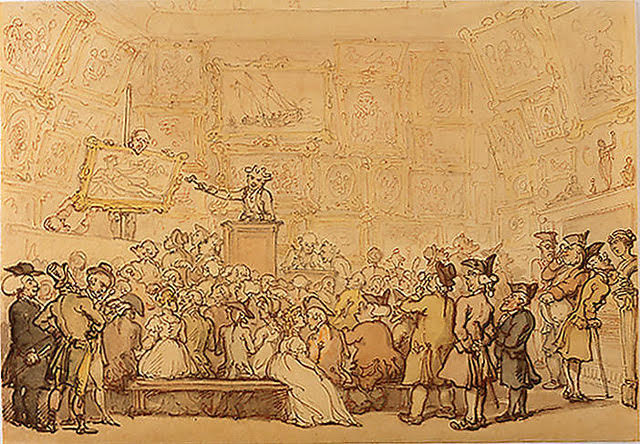Seminar Collection
The merchant Alexis Delahante (1767-1837) and the dispersion of master paintings between Paris, London and Berlin
Tuesday, 06 October 2020, 6.30pm-8.00pm (Paris time)
Online
Christine Godfroy-Gallardo
Please note this seminar will be held in French.
At the very beginning of the 19th century, the merchant Alexis Delahante exported a considerable number of master paintings to England, mainly from revolutionary seizures. The confiscation of the royal collections, the wealth of the Church and the property of emigrants put prestigious paintings, which had been difficult to access until then, within reach of English buyers. For this new clientele, auctions represented an unhoped-for opportunity to purchase paintings from France, but also from the Austrian Netherlands, Holland and Italy. Back in Paris after years of exile in London, Delahante continued his successful trade between France and England. He was able to meet the expectations of a wealthy English clientele by supplying masterpieces that she wanted to keep on British soil at all costs. Its circle of buyers includes members of the aristocracy, as well as newly enriched financiers and dealers such as Lord Penrice or John Julius Angerstein. With his authority in expertise, Delahante became one of the preferred suppliers of the Prince Regent and future King of England George IV, to whom he provided paintings and works of art.
Although Delahante regularly used the auctions organised in Paris or London to dispose of his paintings, he nevertheless preferred amicable sales, offering the works directly to his network of French and foreign collectors. The dealer does not limit his transactions to these private buyers alone, but also intervenes personally with the managers of three major European museums: the Louvre Museum in Paris, the National Gallery in London and the Gemäldegalerie in Berlin. He provides advice and expertise to the directors of these institutions, taking his paintings to one country or another, according to the best opportunities. Delahante was thus one of the few dealers to have succeeded in selling 12 masterpieces from Italian and Flemish schools to the Louvre, before being officially appointed expert curator of the Louvre in 1836. Although his discretion earned him a reputation less dazzling than that of a J.B.P. Lebrun, Delahante contributed considerably to the dispersal of masterpieces beyond national borders, both to private collectors and to museums in the process of being established.
Christine Godfroy-Gallardo has a doctorate in art history from the University of Paris 1 Panthéon-Sorbonne. In 2014, under the supervision of Dominique Poulot, she defended her thesis on the art dealers who worked as experts for the Louvre Museum from the Revolution to 1848. As an independent researcher, she focuses her interest on the history of the art market in relation to the first museum institutions in Europe. She is currently working on the publication of a study on the political rivalries that presided over the arrangement of paintings in the Museum of Arts.
The conference, free of charge, will take place on Zoom.
Please make sure you register in advance to receive the necessary information at this address: collection.seminaire@gmail.com

